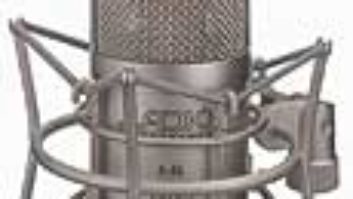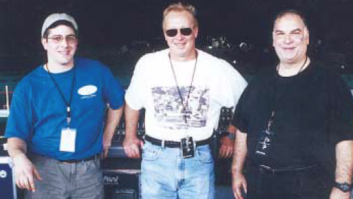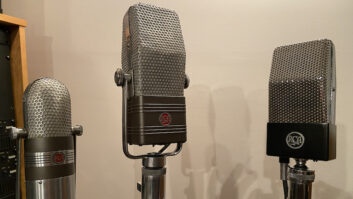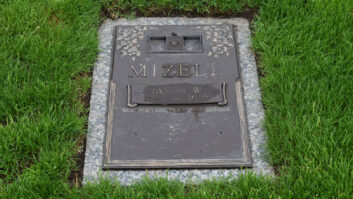ADK made waves a few years ago with the debut of its A-51 (Area 51)Series of affordable—around $400—large-diaphragm FETcondenser mics. Following on that success, ADK introduced a series oftube condensers, including the model A-51TC reviewed here, and theflagship Area 51TT.
The A-51TC sports a—um—“classic” appearanceand is solid and well-built. Its aluminum casing measures 6.5 incheslong and 2.1 inches in diameter, and the mic weighs 18.5 ounces.Inside, there’s a 1-inch diameter capsule with a cardioid polarpattern; the more expensive 51TT has dual 1-inch diaphragms and ninepolar patterns, and a 6072 vacuum tube. Sensitivity is given as 14mV/Pa2 -37 dBV (0 dBV), with a frequency response of 20 to 20k Hz and amax SPL of 125 dB (1% THD @ 1 kHz). Retailing at $999, the mic includesa power supply, shock-mount and hard case.
I used the A-51TC in my project studio during a two-month period. Itested it using a variety of mic preamps, both tube and solid-state,but mostly, I used the onboard mic pre’s in my Yamaha 03D digitalmixer. The 03D’s mic pre’s are clean and were a good match for theA-51TC’s tube-driven character. By extrapolation, it is reasonable toassume that the mic would perform well with most digital systems.
My first experience using the A-51TC was a poetry reading session.The previous night, we had used another large-diaphragm tubemic—which costs twice as much as the ADK—with mixedresults. The A-51TC had considerably more richness and character,handled the sibilants and plosives much more smoothly and was easierfor the (male) talent to “work” closely without bumping upagainst the proximity effect. It also sucked in the faint, unwantedbackground sounds with greater definition and clarity, but that wasn’tthe microphone’s fault.
I also used the A-51TC to record acoustic guitar and dobro. In bothcases, I placed the mic slightly off-axis, about 18 inches away fromthe playing area of the instrument, and got a full sound, with theright touch of crispness in the top end. The lower frequencies on thedobro were rendered particularly effectively, in balance with thehighs, which is not the case with many mics, even large-diaphragmcondensers.
The A-51TC handles a variety of percussion instruments. It capturedboth the low boom and the high “tok” sounds of along-throated doumbek while at the same time, picking up the mostsubtle hand sounds—all in perfect balance. Placed just inside thebottom of a small conga, the ADK delivered a tight, punchy sound. Whenit was used to record a set of car keys on a ring (used as a percussioninstrument), there was no excessive scratchiness. In short, the micbasically reproduced the full range of sounds present, without overlyemphasizing any particular frequency. That’s not to say that there wasno personality imparted to the sound, because in all cases, there was atiny bit of (tube) fuzziness at around 8 kHz, but it was a pleasantfuzziness.
Placed directly in front of a blaring guitar amp, the A-51TC easilyheld its own, enriching the sound with a throaty warmth, making therelatively small amp sound huge, particularly on heavily distortedsettings. Finally, the A-51TC did an excellent job on a male bluesvocalist, capturing the richness and gritty complexity in great detail.The vocalist loved the sound of the mic and asked if it could beused for a live performance.
Overall, the ADK A-51TC has a large and likable sound, and thecoloration it does impart was a good match for a variety of sources,especially those with complex harmonics and overtones. If you aresearching for a large-diaphragm tube condenser in the $1,000 range,then you should give the A-51TC an attentive listen.
ADK Microphones, 360/566-9400, www.adkmic.com. ADK A-51TC Spec SheetType: condenser pressure gradient Vacuum Tube: 6072 Sensitivity: 14mV/Pa2 -37 dBV (0 dBV=1-volt/Pa) Bandwidth: 20 to 20k Hz Impedance(also a hyperlink to glossary): <250 ohms Max SPL: 125 dB (1% THD @1 kHz) EIN (DIN 45405 CCIR 468-2): 28 dB EIN (IEC 268-4, A-weighted):18 dBA S/N ratio @ 1 Pa: 76 dB Connector: 7-pin XLR Body Size: 6.5×2.1inches Body Weight: 18.5 ounces






